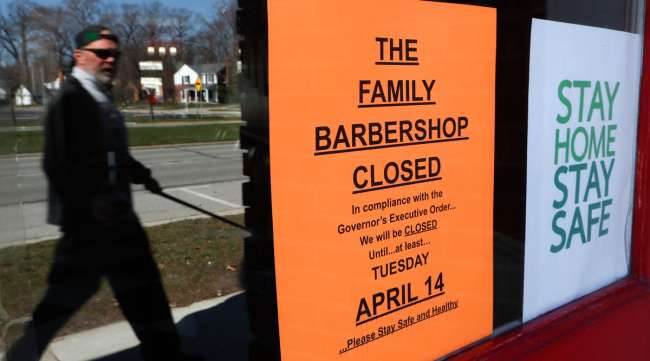US Sheds 701,000 Jobs, Ending a Record Hiring Streak

[Ensure you have all the info you need in these unprecedented times. Subscribe now.]
WASHINGTON — A recordlong streak of U.S. job growth ended suddenly in March after nearly a decade as employers cut 701,000 jobs because of the viral outbreak that has all but shut down the U.S. economy. The unemployment rate jumped to 4.4% from a 50-year low of 3.5%.
The monthly job loss reported April 3 by the government, the worst since the depths of the Great Recession in 2009, is still just a small indication of what’s to come. Last month’s actual losses were likely even larger because the government surveyed employers before the heaviest layoffs hit in the past two weeks. Nearly 10 million Americans applied for unemployment benefits in the final two weeks of March, far exceeding the figure for any corresponding period on record.
Virus-induced shutdowns have forced widespread layoffs throughout the economy, from hotels, restaurants and movie theaters to auto factories, department stores and administrative offices. The nearly full point increase in the unemployment rate from February to March was the sharpest monthly rise since 1975.
One sign of how painfully deep the job losses will likely prove to be: During its nearly decadelong hiring streak, the U.S. economy added 22.8 million jobs. Economists expect the April jobs report being released in early May to show that nearly all those jobs will have been lost.
Roughly two-thirds of the job cuts during March were at restaurants, hotels and casinos, which shed 459,000 jobs. Retailers lost 46,000, manufacturers 18,000.
As recently as February, U.S. employers had added 273,000 jobs. Some economists have now forecast that the unemployment rate could go as high as 15% within the next month. That rate would be the worst since the 1930s. During the Great Recession, unemployment peaked at 10%.
More than 90% of the U.S. population is now living under some version of a shutdown order, which has forced the closure of bars, restaurants, movie theaters, factories, gyms and most other businesses. Some hotels are closed; others are largely empty. Fast-food chains are either closed or providing only drive-thru service, costing thousands of jobs.
With business activity tightly restricted, analysts expect a stomach-churning recession. Economists at Goldman Sachs have forecast that the economy will shrink at an annual rate of 34% in the April-June quarter — the worse fall on records dating to World War II. Goldman expects the economy to rebound with 19% growth in the third quarter. But even by the end of next year, the economy will not have fully recovered from the damage, Goldman projects.
Robert Kaplan, president of the Federal Reserve Bank of Dallas, said April 2 on CNBC that he expects the unemployment rate to rise to the midteens soon, before falling to about 8% by year’s end.
A key determinant of the economy’s future will be whether businesses can survive the shutdown and rehire many of the workers they laid off. If so, that would help the economy snap back and avoid the type of weak recovery that followed the past three downturns.
So far, some large and small businesses are still paying for health care benefits and keeping in touch with their newly laid-off workers. But if the virus outbreak forces businesses to stay closed into the late summer, many may go bankrupt or won’t have the money to rehire their old employees.
That would keep unemployment elevated, depriving potentially millions of people of a paycheck and slowing the recovery.
Want more news? Listen to today's daily briefing:




